
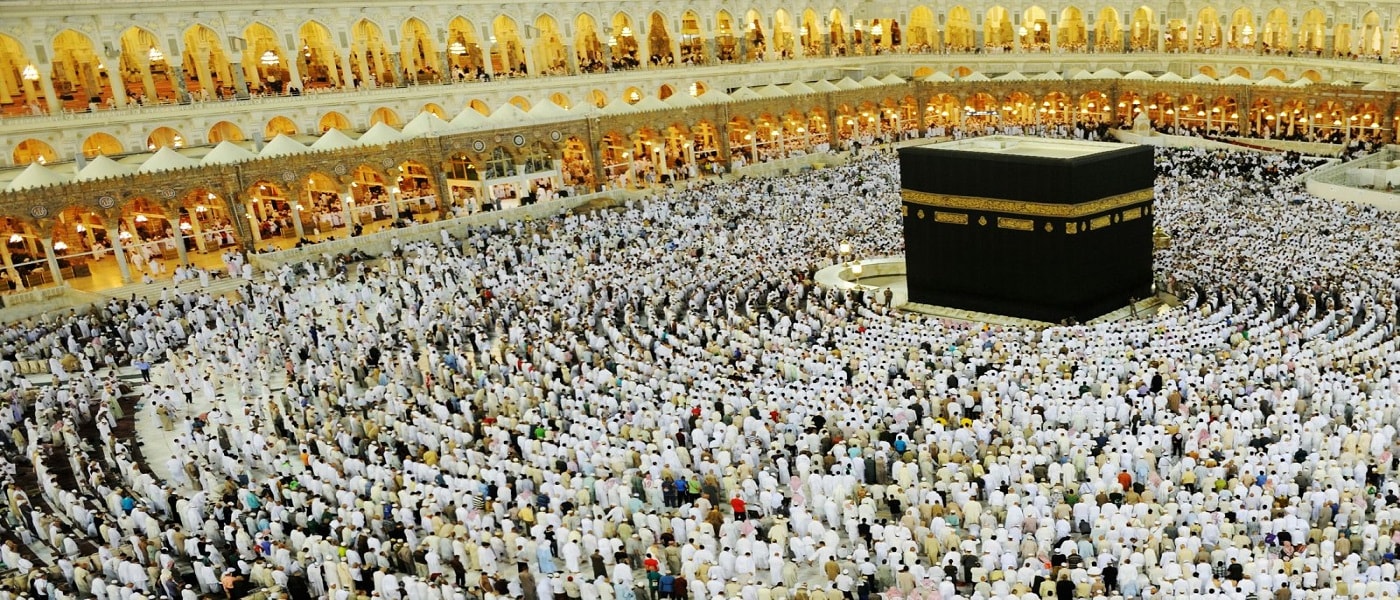
The Philosophy of Hajj Rituals
Hajj literally means ‘heading to a place’. In Islamic terminology, however, it refers to the obligatory annual pilgrimage that Muslims make to Mecca with the intention of performing certain religious rites following the method prescribed by Prophet Muhammad (PBUH&HP) [1].
In essence, Hajj is man's evolution toward Allah. It is social worship that creates a relationship between God and His creatures and has different effects on Islamic society. The performance of Hajj simultaneously signifies many things; it is a show of history, the Islamic doctrine, and that of Islamic unity and brotherhood [2]. Hajj reinforces the religion, i.e., it makes millions of Muslims gather in Ihram; this gathering strengthens the relationship between the followers of Islam and makes their hearts grow closer.
The history of Hajj rituals goes back to the time of Prophet Adam, who was first entrusted by Allah to build the Kaaba, the House of Allah. He and his descendants were the first people to perform Hajj rites. The rites continued up until the time of Prophet Abraham who was ordered by God to rebuild Kaaba along with his son Ishmael:
“When we settled for Abraham the site of the House [saying], Do not ascribe any partners to Me, and purify My House for those who go around it, and those who stand [in it for prayer], and those who bow and prostrate” (22:26).
After building the Kaaba, Prophet Abraham would perform Hajj every year, and this practice was continued by his son after his death. However, gradually with the passage of time, both the form and the goal of the Hajj rites were changed. Kaaba had turned into a place of idolatry, and the people had totally abandoned the teachings of their leader, Prophet Abraham until the time came for his supplication to be answered:
“Our Lord, raise amongst them an apostle from among them, who should recite to them Your signs, and teach them the Book and wisdom, and purify them. Indeed You are the All-mighty, the All-wise” (2:129).
After a long time [i], a man by the name of Muhammad ibn ‘Abdullaah was born in the very city that Prophet Abraham had made this supplication. For twenty-three years, Prophet Muhammad (PBUH&HP) spread the message of monotheism (Tawhid) – the same message that Prophet Abraham and all the other Prophets carried – the most important message of Hajj.
Not only did Prophet Muhammad (PBUH) purify the Kaaba from idols and all the defilements, but he also reinstated all the rites of Hajj and banned all indecent and shameful acts. Consequently, Kaaba became the universal center for the Muslim worshippers of the only true God, once again [3].
Hajj Rituals
Annually, Muslims from all over the world are encouraged to participate in this great "pilgrimage" (Hajj). Everyone is considered equal. There is no discrimination on the basis of people’s race, sex, or social status.
There are secrets about Hajj exoteric rituals that are somehow beyond man’s understanding and so not easy for everyone to learn. Some steps of the Hajj rites are reminiscent of the events associated with Abraham, Ishmael, and his mother Hagar, and personify their self-sacrifice, altruism and struggle with Satan in the path of Allah [4]. This would help us understand the philosophy behind some of the acts performed in Hajj.
Ihram
The performance of Hajj begins at Miqat, a place where pilgrims should wear Ihram and from there go for Hajj or Umrah. Donning such unsewn white garments entirely distances man from material ostentations and engrosses him in a world of purity and spirituality. Clothes show individuality and distinction.
They create superficial barriers that separate man from man. The garments of Ihram, however, are the antithesis of that individualism. You join a mass and become nothing but a drop of water in an ocean that has no special identity of its own. Ihram clothing is also a reminder of shrouds that every human has to wear after death. This helps you assume your original shape as a man, just one of the “descendants of Adam” who will die one day.
Hajj is a movement that reminds us of our journey to Allah; “toward Allah is the destination” (24:42). In the state of Muhrim, There is no sex, no perfume, no shoes, no sewn clothes and headcovers for men, no face mask, no cutting of hair or nails, i.e., absolutely no signs of aristocracy or distinction; you don’t even look in a mirror to see your own image.
You don’t hunt any animal; you don’t uproot any plant. So you kill the tendencies of aggression by being peaceful to nature, and this continues until you perform all the rituals and come out of Ihram. All your selfish egos must be buried at Miqat. You witness your own body just like what it looks after death when it is being buried. By sacrificing your individuality, you focus on reality, the basic purpose for which you have been created – that is devoting yourself totally to Allah.
Circumambulation (Tawaf)
Positioned in the center, Kaaba is like a sun while the people are like stars traveling in their orbit of the solar system. Kaaba symbolizes the constancy and eternity of Allah. The moving circle of people represents the continuous activity and transition of His creatures.
This rite is actually the manifestation of Tawhid, the Oneness of God. The heart and soul of the pilgrim should move around Kaaba, the symbol of the House of Allah, in a way that no worldly attraction distracts him from this path. Only Tawhid should attract him. Tawaf also represents Muslims’ unity. During Tawaf, everyone encircles Kaaba collectively.
There is no individual identification of men or women, black or white, red or yellow. The movement has transformed one ‘person’ into the totality of ‘people’ establishing the universality of the Islamic community with the goal of approaching Allah. Likewise, you must reject self-centeredness and step in the way of Allah, which is the way of people. In other words, to approach Allah, you must first genuinely become involved in people’s problems. This is how you are with the people and where you may approach Allah [5].
Maqam
After Tawaf, you have to perform two rak’at of prayer behind Maqam-e Ibrahim [ii] (Abraham's place of standing), which is a very blessed place for praying [6]. It is the nearest point to Allah. As a matter of fact, there is nowhere on earth where you get more rewards than this place for praying. The stone has the footprint of Abraham. He stood over this stone to lay the cornerstone (Hajar al-Aswad), to reconstruct Kaaba, and to pray [7]. By standing on the same stone, you vow to become like Abraham, the upright friend of Allah, who was uncompromising in his conviction of Tawhid [8].
Sa’y
Sa’y literally means to strive, to make an effort to reach an aim. Running between the mountains – Safa and Marwa – seven times, you act like Hagar, the mother of infant Ishmael. After Abraham left her and their son, near the valley of Mecca, Hagar had no food, no water, no shelter, neither for herself nor her child, but only uncompromising, relentless faith that the God of Abraham will not leave her and her son without sustenance.
She started looking out for water, running to the top of the mountains, Safa and Marwa. But she did not find any water. She searched again and again. After running seven times between these two mountains, she came down from Marwa to check on her infant son when she heard the sound of gushing water coming from the sand he had dug under his heels. It was Zam-Zam, a sweet and life-giving fountain of water which was a gift from Allah to the mother and son, and all those who came later. So Sa’y is physical work. It is a struggle to satisfy your needs, and a way to achieve a better life.
The Stay in Arafat Plain
The name Arafat means acquaintance or cognition. There are a few beliefs for why this place has been given this name; in one of the most famous of which, it is held that Prophet Adam and his wife Eve met each other at this plain after they were separated for many years.
It was the devil (Iblis) who misled our forefather -Adam- by telling him to eat from the tree of eternity and possession and caused them to descend from Paradise [9]. They met in Arafat once again, where they became acquainted with one another and with their sins. They made supplications to God and sought His forgiveness. It was in the center of this plain where they were forgiven by Allah. In short, Arafat represents the beginning of man’s creation, that of our forefather Adam. Here you act like Adam or Eve and seek forgiveness for yourself and your loved ones [10].
The Stay at Mash’aril-Haram
Pilgrims of Hajj, returning from Arafat, spend the night between the 9th and 10th of Dhu al-Hijjah at Muzdalifah in the open air. It is here they gather pebbles to hurl at the pillars of Mina (Jamarat). The shortstop at Mash’ar may remind you of your short life on this earth! That you are only a moment of this eternal time. It is for you to think, to plan, to strengthen your spirit, to prepare yourself for the battlefield to fight with the devil. The verse below best describes the philosophy behind the stop at Mash’ar:
“Then when you stream out of Arafat remember Allah at the Holy Mash’ar, and remember Him as He has guided you, and earlier you were indeed among the astray” (2: 198).
Stoning the Pillars (Rami al-Jamrat)
At Mina, the longest and last pause occurs. Millions of freedom-fighters who refuse to obey any power except Allah crowd here.
It has been said that Satan appeared in front of Prophet Abraham at this place three times when he wanted to sacrifice his son under God’s command. Satan tried everything to put doubt in his mind, but Prophet threw seven pebbles at him each time and made him run away. The Devil also tried to pervert the mother and the son to prevent Abraham from obeying God’s command, but they stayed firm in their resolution.
This deed became so monumental that it was made a rite of Hajj to teach us that Satan tries to misguide one sometimes through the spouse or offspring and sometimes approaches directly. Only strong faith in Allah can save us from this evil influence.
Sacrificing an Animal (Qurbani)
During Hajj you are to:
Declare monotheism by Tawaf.
Exercise the struggle of Hagar by Sa’y.
Show the descent of Adam by going to Arafat from the Kaaba.
Show the philosophy of man's creation, the evolution of thoughts from pure science to pure love, and the ascension of the spirit from mud to God by going from Arafat to Mina.
The last stage of evolution and absolute freedom from earthly desires with full submission to Allah is here, in Mina. It was at this plain that both the father and the son - Abraham and Ishmael - had surrendered to Allah, where Abraham was being tested to see whether he was capable of overcoming his personal feeling of love for his son for the sake of Allah, to check whether he was prepared to sacrifice his son. But when he was ready, his Ishmael was returned unto him unharmed:
“O Abraham! You have indeed fulfilled the vision” (37:104).
The lesson that would be learned here is if you love something more than you love Allah, then that thing has become your idol, and you must be ready to sacrifice that. You must be prepared to slaughter your worldly desires, worldly love, your Ishmael in Mina in order to be free from all worldly attachments. If you are, then slaughter a goat, sheep, ram, cow, or camel instead: “Thus do We reward the virtuous” (37:110).
“It is not their flesh or their blood that reaches Allah. Rather it is your God wariness that reaches Him. Thus has He disposed of them for your benefit so that you may magnify Allah for His guiding you. And give good news to the virtuous” (22:37).
Cutting Hair (Taqsir)
After sacrificing an animal, you are to spurn your earthly pleasures once again by shaving or trimming your hair [iii]. You become free from whatever that stands between you and God even if it is as small as superficial beauties.
You acknowledge the Divine beauty by putting aside your pride and arrogance, and cleanse your soul and spirit from impurities. Consequently, it is by this sheer servitude to Allah that you reach absolute freedom.
When you first approached Kaaba, you had not, by then, purified yourself. You were still impure and unconscious. In Arafat, you gained consciousness. In Mina, you purified yourself. So, this is appropriate that you do the Tawaf and Sa’y in the purified state once again before you complete your Hajj and totally come out of Ihram.
Circumambulation of Women (Tawaf-Un-Nisa)
It is obligatory for both men and women -either married or single- to perform Circumambulation of women (Tawaf-Un-Nisa). This shows the importance that Islam place on blissful married life and its effects on the family institution and the whole society.
Allah has made the husband promise to treat his wife well:
“Treat them (wives) kindly” (4:19).
As soon as the Ihram clothing for Hajj is donned, the husband and wife become prohibited for each other till the end of the rituals. As a matter of fact, marriage (Nikah) bounds a man and a woman into a married couple; in the same way circumambulation of women (Tawaf-Un-Nisa) and its prayer again reinstate the relationship of the couple. The mistakes they have made in the past get pardoned, and they are given a chance to start a new relationship, to be very careful in performing all their duties in their married life and family unit.
This is the latter Tawaf of the Kaaba, performed after you return from Mina. In Mina, you have defeated Satan and renewed your ties with Allah by following the footsteps of Abraham before you return home. During the rituals of Hajj, you played the roles of Abraham and Hagar. Do not replace your role-playing to something else when you return. Like Hagar, always trust in Allah. Like Abraham's fight against oppression. Like Abraham be prepared to sacrifice your Ishmael, i.e., love or desires, for the sake of your faith. That is the essence of Hajj. You return to Allah the way He wanted you to be: a slave totally dedicated to his/her Lord.
Conclusion
During Hajj rituals, and before Muslims return home, they defeat Satan and renew their relationship with God. They learn always to have faith in Allah and to be prepared to sacrifice their desires for the sake of Him. The rites of Hajj remind us of the Islamic axioms, i.e., monotheism (Tawhid), prophethood (Nubuwwah) and the afterlife (Ma’ad).
They also indicate the importance of unity in the Islamic community. Ultimately, Muslims return home with a reserve of knowledge and experience to share with their society. If accepted by Allah, this holy experience could remain like a glittering beam in their whole life.
The Holy Prophet said: "The daily prayer, Hajj, circumambulation, and other rites are aimed at remembering Allah. But when there is no remembrance of Him in your heart, what value will your oral remembrance have?"
Accordingly, faith is based on three important stages; acknowledgment by heart, affirmation by words, and performance of the principles.
Notes:
[i]. According to some historical texts, after about more than three thousand years.
[ii]. A large stone on which Prophet Abraham stood while building the upper walls of Kaaba. It is believed that this rock was sent to Abraham from heaven along with three other rocks, the other one of which is the sacred black stone (Hajar al-Aswad).
[iii]. Women should not shave their heads; they only trim slightly at the end of the lock of hair. However Shaving the head is obligatory for men if it is the first time they are performing Hajj.
References:
- History of Hajj
- Hajj
- History of Hajj
- Circumambulating
- (2:125)
- (2:125)
- the soul of Hajj
- (20: 120,121,122,123)
- Hajj
- (22:29)
Share This Article
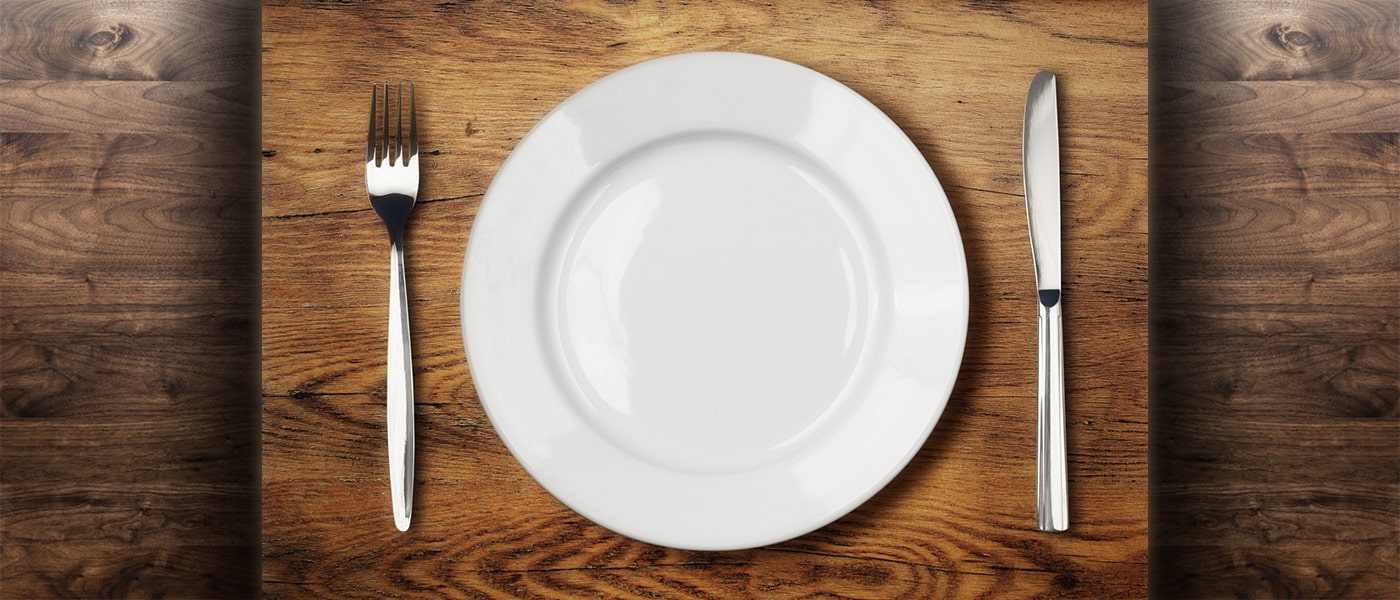
How to Fast
Fasting (Sawm) in Islam is not a very complicated task- just like many other tasks in this holy religion. However, having a general knowledge of its rules and regulations is essential for all Muslims. Fasting is generally defined as the act of voluntarily preventing oneself from eating and drinking during a particular period in the day – from the time of dawn prayer(Salat al-Fajr) until dusk prayer (Salat al-maghrib). According to the Sharia of Islam, there are seven types of fasting that are obligatory for Muslims to perform [1]; one of the most important of which is fasting during the month of Ramadan. lets see how to fast.
How to Fast?
The process of fasting is quite an easy one; first, you will need to make your intention (Niyyah) clear for your fasting: “I will fast today seeking Allah’s contentment and closeness to him.” Note that you should make your intention- whether in your mind or by saying the actual words- before the time of dawn Prayer (Salat al-Fajr). The next step is to avoid doing certain actions during the time of fasting. Basically, there are nine actions that would void your fast:
Eating and drinking (if you forget you are fasting and ate or drank something unintentionally, your fasting won’t be voided)
Having sexual intercourse
Masturbation
Insulting Allah and his holy prophets
Inhaling thick dust
Immersing your head completely in water
Not having performed the obligatory ablutions before sunrise
Doing enema using liquids
To vomit intentionally [2]
Who Should Not Fast?
In certain cases, fasting would lose its obligation. If you are a traveler, you won’t need to fast, if you have become temporarily ill and by fasting your illness would worsen, fasting will be forbidden for you, and if you fast you have committed a sin.
Nevertheless, you will have to fast before the coming of the next Ramadan, instead of the one(s) you have missed. However, if you have a chronic sickness – e.g., diabetes- and according to your doctor’s view fasting is harmful to you forever, instead of fasting you will have to pay a certain amount of money in order to be given to underprivileged people in society called atonement (Kaffareh) [3].
Eid al-Fitr
Muslims celebrate Eid-al-Fitr, Feast of Fast-Breaking, at the end of Ramadan which falls on the first day of the Islamic month of Shawwal. This religious Eid is a single day during which Muslims are not permitted to fast.
Many Muslims attend a particular congregational prayer (Salat al-Jama'ah) to thank the Almighty who enabled them to fast and to remember the needy and the destitute. It is also compulsory for Muslims to pay Zakat al-Fitr (Fitrah) during Eid al-Fitr, preferably before offering the Eid prayers.
Zakat al-Fitr
Zakatul-Fitr is a mandatory religious tax paid by those who can afford it as a kind of charity at the sunset of Eid al Fitr night (i.e., the night preceding Eid day). Whoever is an adult, sane, neither unconscious, nor poor, nor the slave of another, should give, on his own behalf as well as all those who are his dependents, about three kilos of wheat, barley, dates, raisins, rice or millet, etc. per person. It is also permissible if he pays the price of one of these items in cash. Fitrah should be given to deserving believers whose income is not sufficient to spend on their families for one year [4].
Spiritual Effects of Fasting
It is noteworthy that fasting is not a mere act of depriving oneself of foods or drinks; in fact, the most important aspect of fasting is its spiritual impact upon man. It makes human's soul kind, strengthens his determination, and moderates his instincts. Trying to avoid foods and drinks in Ramadan, which are allowed on normal days, fasting helps people keep away from forbidden deeds (Haram) more easily.
Fasting is a special act of worship that is only between humans and God since no one else knows for sure if this person is actually fasting. Imam Ali (AS) explains the philosophy of this act as below:
“Allah ordered the observance of fasts for fostering (the attribute of) sincerity within the people” [5].
Social Effects of Fasting
Fasting is also a practice for human beings to be more observant of their actions and to experience, even for a very short period, what poor people go through in their lives. God has obliged humans to fast to convey the message of equality between the rich and the poor; the rich experience the pangs of hunger and thus fulfill their obligations to the destitute.
If the wealthy nations of the world were to fast for just a few days in the year and experience hunger, pain and trouble poor people suffer from, they would probably exhibit mercy upon them, and there would not still exist any hungry people in the world [6].
The Health Benefits of Fasting
The miraculous effect of abstinence (from food) in curing various diseases has been ascertained in modern as well as ancient medicine. Lots of articles have been written on the medical and therapeutic effects of fasting.
In a well-known tradition, the Noble Prophet (PBUH&HP) says:
“Fast, in order that you become healthy.”
It is a fact that the cause of a great number of diseases is extravagance in the consumption of various types of food.
The prophet (PBUH&HP) also says:
“The stomach is the house of all maladies and abstinence (from food) is the best of all cures” [7].
When we eat or drink, we inevitably enter many toxic substances into our body; consequently, organs should always be working to get rid of these harmful materials. The detoxification process of the body will be considerably accelerated during the time of fasting.
Since our body does not receive any substance externally, the materials that had been stored in the body will be used to produce sufficient energy; thus, the infections and microbes that were accumulated in our body will be released along with those materials and our blood will be purified noticeably. It has been claimed that fasting will balance the hormones in our body and will result in better functioning of our organs [8] & [9].
To conclude, the ultimate goal of fasting in Islam is to redirect our attention toward our inner selves. In addition, it serves as a reminder for us of our superiority to other creatures in respect to our power of will, our capacity to choose to fight against evilness and to refuse to be driven by our desires. In consequence, we would finally be prepared to reach the summit of humanity and become the perfect human who is worthy of God’s attention and reward.
May Allah bless you and accept your fasting as well as all your other good deeds.
References:
- Fast
- Fasting
- 1:184,185
- Sawm
- Fasting
- Fasting
- How to Fast
- Reza Paknejad. The First University and the Last Prophet. Vol. III. Tehran: Islamie Bookselling, 1346.
- Herbert M.C. Shelton. Fasting can save your life. Trans. Masha Allah Farkhonde. 1st. Tehran: No Andish Publication.
Read More
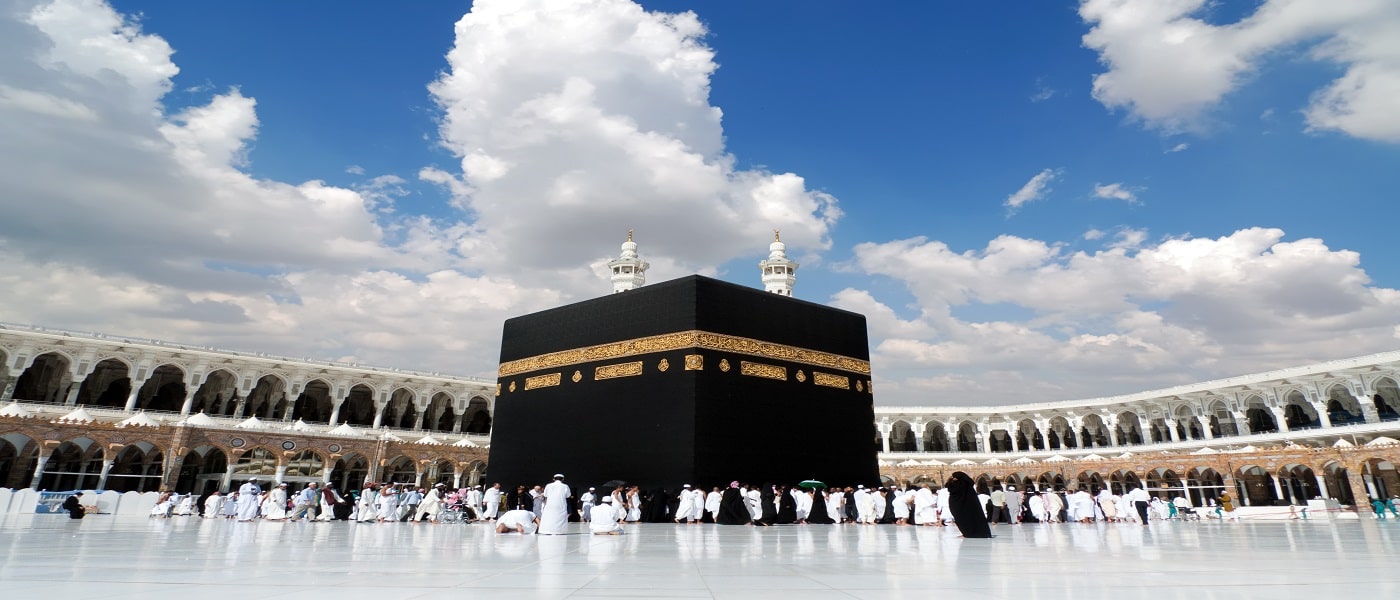
Hajj The Holy Pilgrimage
The best way to begin this article is by this beautiful saying of Imam Sadiq (AS) regarding Hajj: “The pilgrims, i.e., performers of Hajj or ‘Umrah’ are the guests of Allah, if they ask for something, He will answer them; if they supplicate to Him, He will answer them; if they intercede, He will accept it; and if they keep quiet, He will be the beginner, and they will be compensated instead of one Dirham, a million Dirhams” [i].
Hajj The Holy Pilgrimage
Literally speaking, Hajj means heading to a place for the sake of visiting. In Islamic terminology, Hajj is a pilgrimage made to Kaaba, the ‘House of God’, in the sacred city of Mecca in Saudi Arabia. It is obligatory for every Muslim to perform Hajj at least once in their lifetime provided that he/she is physically and financially able to do so. The rites of Hajj, which go back to the time of Prophet Abraham who built Kaaba after it had been first built by Prophet Adam, are performed over five or six days, beginning on the eighth and ending on the thirteenth day of Dhu al-Hijjah, the last month of the Islamic calendar.
Hajj is the ultimate form of worship, as it involves the spirit of all the other rituals. Nearly two million Muslims from all over the world meet each other and refresh in themselves the faith that all Muslims are equal and deserve the love and sympathy of others, regardless of their race, wealth, status, class, culture and ethnic origin [1].
Generally, there are three kinds of Hajj: Hajj al-tamattu, Ifrad, and Qiran. The first is the duty of a person whose home is located 16 farsakhs (about 90 km) away from Mecca. The second and the third (Ifrad and Qiran) are the duties of those who live in Mecca or outside it within this distance. Hajj al-tamattu differs from the two other kinds in its rituals and practices which is the focus of this article. It is also noteworthy that even Hajj al-tamattu becomes obligatory under certain circumstances, including sanity, adulthood [ii] and Istita’ah [iii] [2].
In the context of Hajj al-tamattu, the question of ability to perform this task (Istita’ah) and who is capable of it (Mustati) is of utmost importance and a very sensitive issue. To be Mustati, you should have the following abilities:
financial ability – i.e., you have enough money to support yourself and your family on your journey,
physical ability- i.e., Hajj is not obligatory for the sick, the old or those who are either unable or would face severe hardship,
Sirbi ability - i.e., the route is open and safe,
Time ability- i.e., that there should be enough time to go on Hajj after becoming Mustati [3].
Bearing these conditions in mind, let’s take a brief look at the rituals a person should perform when they go on Hajj.
Basically, Hajj al-tamattu consists of two parts: Umrah of Tamattu [iv] and the Hajjah, both have to be performed in the same year in Dhu al-Hijjah.
The rituals that have to be performed in the first part (Umrah) include five stages:
Ihram
Circumambulation (Tawaf)
Prayer of Tawaf
Sa’y
Taqsir
The pilgrims who visit Prophet Muhammad's (PBUH&HP) shrine and Imams' sepulcher in Medina before performing Hajj rituals, become Muhrim in Masjid al-Shajarah, and those who travel to Mecca from Jeddah become Muhrim in Juhfah.
To be Muhrim, men should take out all the clothes that are stitched and instead wear a two-part unsewn and clean white garment, one covering the lower parts of their body and the other their shoulders. Women, however, can wear stitched clothes provided that they are clean and white, and their face is not covered by anything. Then intending to perform the Umrah of Tamattu, they should say: LabbaikAllahommalabbaik,labbaika la sharikalakalabbaikm [vi].
Now you are Muhrim and ready for entering the sacred house of God.
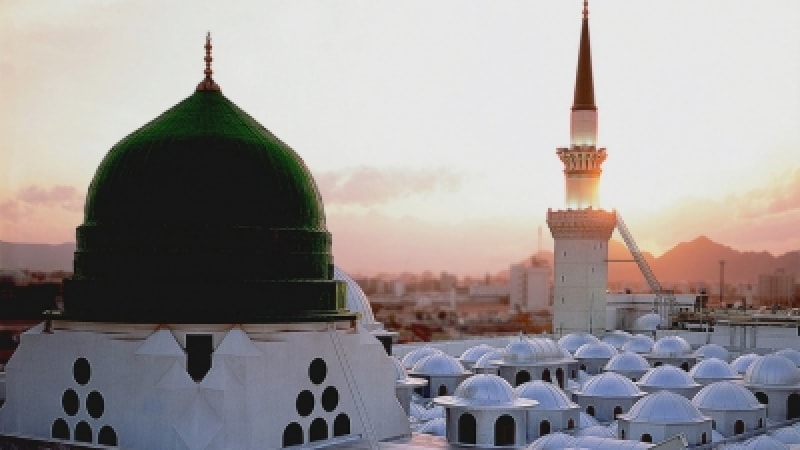
There are twenty-five things which are forbidden in the state of Ihram. These are:
Hunting the land animal
Sexual intercourse
Kissing the woman.
Touching the woman
Looking at the woman and indulging in foreplay
Masturbation
Marriage
Using perfume
For men only: wearing the sewn clothes
Applying kohl on the eyes
Looking in a mirror
Wearing shoes or socks (For men only)
Cursing other people
Quarreling with others
Killing the insects on one’s body
Using cosmetics
Applying oil on the body
Getting rid of the bodily hair
For men only: covering the head. (Even submerging the head in a body of water is not allowed, for both men as well as women.)
Covering the face (For women)
For men: shading themselves from sun or rain.
Causing blood to come out of one’s body
Clipping the nail
Pulling out the teeth [4]
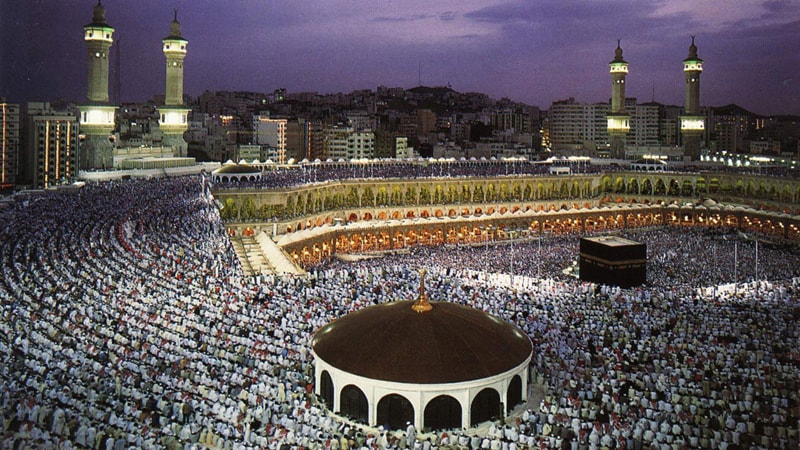
After saying your intention (Niyyah), you have to circumambulate (turn around) Kaaba located in Masjid al-haram seven times; “a fixed point in the center and everything else moving round it; a circular movement… sun in the center and turning round it are people, each a star in their own sky” [5]; you are performing Tawaf.
The reason for this rite is that the heart and soul of the pilgrim should move around the House of Allah and his love for Allah should become so great that no worldly attraction, neither the East nor the West, would distract him from this path. Only the Oneness of Allah (Tawhid) should attract him. Tawaf also conveys the message of unity. The pilgrims have come from different countries in the world; they have all gathered in Masjid al-haram circumambulating around Kaaba. It seems as though they were drops of water that now have made a huge ocean altogether [6].
When circumambulating, note that Kaaba should be on your left side, your clothes should be completely clean, and you should perform Wudu (ablution) before starting. Also, be careful not to bump into other pilgrims and keep your shoulders straight. After completing this holy task, you should perform a Salat which is called prayer of Tawaf (Tawaf’s Salat) and is performed like Morning Prayer behind Maqam Ibrahim.
Now, you have done your Tawaf and performed the Salat after it; what you will go through next is called Sa’y. You should walk the distance between Safa and Marwah seven times, starting from Safa and terminate the first lap at Marwah, then walk the second lap from it to Safa and so on till you terminate the seventh lap at Marwah. Don’t worry, if you get tired you are allowed to take a brief rest and start over from where you stopped.
Last but not least, in the rituals that should be performed throughout Umrah al-tamattu is called Taqsir, meaning that you have to cut a short piece of your hair or nails. With this task done, your Ihram will be finished, and everything that was Haram in this process will become Halal again, and you can take off your Ihram clothes.
Congratulations! You made it; you have completed the first part of your pilgrimage. Now, you will enter the next phase, called Hajjah.
Hajjah consists of 14 stages:
Wearing Ihram
Staying at Arafat
Staying at Muzdalifah (Mash'arul Haram)
Going to Mina
Stoning the Jamratul Uqba
Sacrificing an animal
Taqsir
Tawaf of Hajj
Prayer of Tawaf of Hajj
Sa’y
Tawaf-un Nisa
Prayer of Tawaf-un Nisa
Staying at Mina
Stoning the three pillars (Jamaraat) on the 11th and 12th of the month
On the 8th day of Dhul-Hijja, pilgrims become Muhrim again and go to Arafah -a plain about 20 km Southeast of Mecca- and stay there on the 9th of Dhul-Hijja from noon to sunset. You can walk, sit or sleep, talk or keep quiet and think in there, but it is strongly recommended to spend the entire day, especially the afternoon, in supplication and Dua.
At sunset, you have to set out to Muzdalifah (Mash’arul Haram) where you are supposed to stay until sunrise and at which you gather pebbles for hitting the Jamaraat. Then on the 10th day, you leave for the land of Mina. You need to stone the Jamratul Uqba (biggest pillar) with seven pebbles, sacrifice a sheep, a camel or a cow, and shave your head or perform Taqsir [vii].
After performing three of these you can come out of Ihram, but there are still acts you have to do and ones that are forbidden like wearing perfume, hunting, and marital relations.
Acts that remain to be performed:
Tawaf of Kaaba; you turn around Kaaba, seven times as you did for Umrah.
Salat of Tawaf; after performing Tawaf, recite two-Rak’at Salat behind Maqam-e- Ibrahim.
Sa’y; perform Sa’y the same as the one did for Umrah except for the intention which has to be of Hajj-al-Tamattu.
Tawaf-un-Nisa; return to Kaaba and perform another Tawaf with the intention of Tawaf-un-Nisa of Hajj-e-Tamattu.
Salat of Tawaf-un-Nisa; recite another two Rak’at Salat behind Maqam-e-Ibrahim with the intention of Salat of Tawaf-un-Nisa of Hajj-al-Tamattu.
Spending the night in the land of Mina; it is obligatory (Wajib) to spend the night of 11th and 12th of Dhu al-Hijjah in Mina.
Rami al Jamaraat; while in Mina, you have to stone all the three pillars (Jamaraat) with seven pebbles between sunrise and sunset on both the 11th and 12th day.
After stoning the three Jamaraat on the 12th day, you will leave Mina for Mecca before sunset. Your Hajj is complete, and you are free to do everything you were allowed to do before Ihram. There is also a great emphasis on visiting the Prophet's mosque in Madinah before or after Hajj. Pilgrims return to their countries after Hajj rituals, and they are as pure as a newborn baby.
May God accept your Hajj.
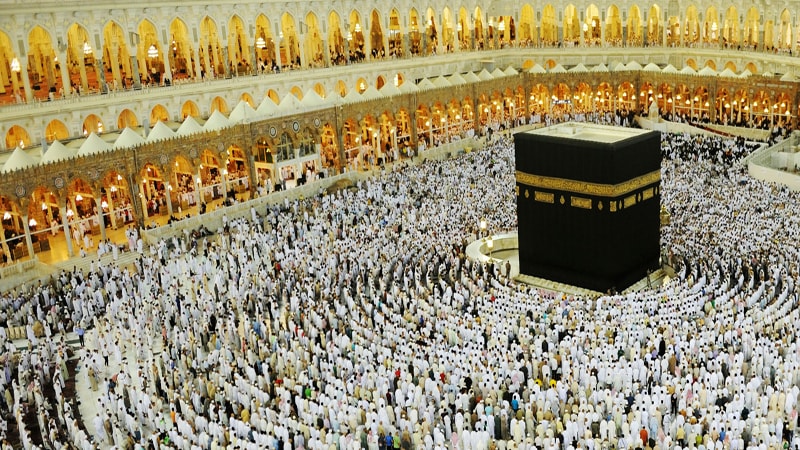
Notes:
[i] A unit of currency in several Arab states
[ii] People who have reached the age of shar‘ī puberty
[iii] Having the capacity to perform Hajj
[iv] Not to be confused with the Umrah al-mufradah which refers to Umrah that is performed independently of Hajj. However, they have some rituals in common.
[vi] «لَبَّيْكَ اللّهُمَّ لَبَّيْكَ، لَبَّيْكَ لا شَرِيكَ لَكَ لَبَّيْكَ»: "Here I am (for Hajj). Oh Allah, here I am. Here I am. You have no partner. Here I am."
[vii] Women clip their hair or the tip of their fingernail.
References:
- what is Hajj
- Hajj
- Hajj
- Hajj & Umrah
- Shariati, Ali. Hajj (The Pilgrimage)
- Hajj
Read More

